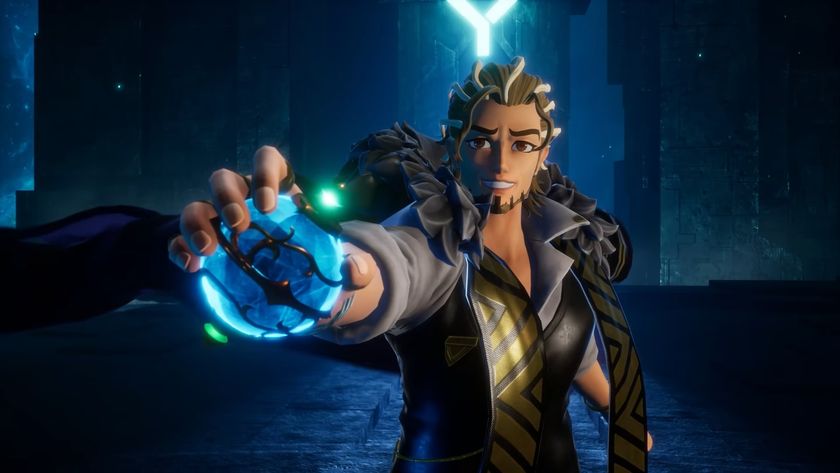Why you can trust GamesRadar+
So, that morality system. Some situations are straightforward – rescue the innocent, get good karma, needlessly murder captured soldiers, get bad karma. But it’s the game’s brilliant and hilarious ‘morality moments’ that will test your moral fibre. At a set point during each level, a cutscene will play. You’ll then be given a choice of responses or actions, one of which is deemed good (with little or no reward), and bad (weapon parts and large amounts of money).

Depending on what you choose, a short animated movie plays (drawn by DC and 2000AD comic artists) showing the consequences of your actions. The interesting thing is, whether your decision was ‘good’ or ‘bad’, things will never turn out like you expected. Some of these mini-movies are funny, others more melancholy, and some actually quite shocking. Army of Two succeeds where other games with similar systems have failed, because the choices are never as simple as black and white. What you think is the ‘right’ thing to do might be the exact opposite.
One thing that has remained the same is the aggro system. It’s at the core of every battle, and lets one player attract the attention of enemies while the other flanks them. The player with the most aggro glows orange, while the ‘safe’ one glows blue. It’s a system that worked incredibly well, and still does. A good example of aggro in play is when you’re faced with riot shield-equipped soldiers – one player can move somewhere high and draw their aggro, making them turn around, exposing their sides to the flanking player.

As with the original, The 40th Day is, simply, better with a real person. While the AI is totally functional, the simple d-pad commands – move forward, draw aggro, hold back, regroup – just can’t compete with physically communicating with a friend and organising tactics on the fly. You’ll still have fun on your own, but the game shines in cooperative mode. You can play locally with split-screen, in a private match online with a friend, or jump randomly into a stranger’s match online.
There’s also a selection of regular multiplayer modes, like Partner Deathmatch and Warzone, (think Headquarters in Modern Warfare 2), but the twist is that you still work in teams of two, with all the game’s co-op features enabled.

The 40th Day is the perfect example of a developer listening to criticism and making positive changes. It’s not the most progressive or technically impressive shooter, but the morality system, weapon customisation and online co-op elevate it, and it’s one of the best cover-to-cover shooters on 360. If you’ve gone through Spec Ops with a pal in Modern Warfare 2 and want more of the same quality co-op action, this is well worth a look. As a third-person action game it’s not as polished or consistently entertaining as Uncharted 2 or Gears of War, but still a worthy and often surprising alternative.
Jan 12, 2010
More info
| Genre | Action |
| Description | This deadly duo of hetero life mates are back, this time fighting their way out of Shanghai. As a third-person action game it's not as polished or consistently entertaining as Uncharted 2 or Gears of War, but still a worthy and often surprising alternative. |
| Franchise name | Army of Two |
| UK franchise name | Army of Two |
| Platform | "PS3","Xbox 360","PSP" |
| US censor rating | "Mature","Mature","Mature" |
| UK censor rating | "18+","18+","18+" |
| Release date | 1 January 1970 (US), 1 January 1970 (UK) |

Palworld dev says the studio went dark for months because "the team was getting burnt out from all the social media stuff, I was getting burnt out, our CEO was under attack in Japan"

Metaphor: ReFantazio had to dial back an early battle system inspired by a notoriously brutal 2003 JRPG, because 20 years later, players found it "irrational" and "just not fun"

Spider-Man's ex Mary Jane Watson is officially Venom, but she and the symbiote are "not together by choice"











